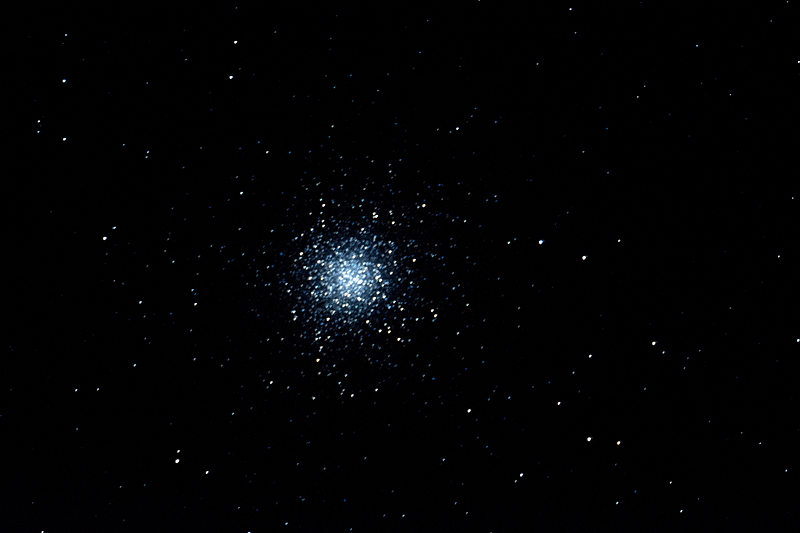Crescent Moon, Craters;
More StarLock tests, M63, M104, M13
Posted: 10 May 2016
|
Open: Monday, 9 May 2016, 1829 MST Temperature: 85°F |
Session: 959 Conditions: Clear, breezy |
Equipment Used:
12" f/8 LX600 w/StarLock
Wireless AutoStar II handset
2" OPT diagonal
2" 24mm UWA eyepiece
1.25" 40mm eyepiece
1.25" 26mm eyepiece
2" 2X PowerMate
Camera:
iPhone 6s Plus
D7200 DSLR
1837 MST: LX600 ON, StarLock OFF. Viewed the crescent Moon, 102X. Switched to a 1.25" 26mm eyepiece (94X) but could not get entire lunar disk in field-of-view (FOV). With a 1.25" 40mm eyepiece (61X) the Moon's disk was fully visible in the FOV.
1915 MST: sunset. Took this handheld afocal 61X photo (cropped) of the Moon using the iPhone 6s Plus:

Switched back to the 26mm eyepiece and added the 2" 2X PowerMate. There were some nice views along the lunar terminator, especially the craters Endymion and Petavius. Using the SteadyPix afocal adapter, took these (cropped) photos of Endymion (top) and Petavius (bottom):


1935 MST: began monitoring the shadows at crater Endymion, 2" 24mm UWA eyepiece + 2X PowerMate (203X). I also began preparing the D7200 DSLR for prime focus imaging for the StarLock guiding tests. 1956 MST: last look at the Moon, 203X. Then viewed Jupiter, 203X. The four Galilean Moons were visible.
2010 MST: slewed to M63 (Sunflower Galaxy), which would be the guiding test target object. Mounted the DSLR at the 12" telescope's prime focus. Slewed to the star Arcturus and did a focus test using the Astrozap mask. 2021 MST: StarLock ON. Slewed back to M63, centered it in the DSLR viewfinder, and SYNCed on its position. I did exposure tests of 1, 2, and 4 minutes, ISO 6400, White Balance 4000K, using StarLock Guide Rates of 5%, 10%, 20%, and 33% for both RA and DEC. This night on this object there was very little guiding error using any of the rates. This is the 4 minute exposure, guide rates 20%, slightly cropped:

Since the StarLock guiding seemed pretty good I slewed to M104 (Sombrero Galaxy) to try a 4 minute, ISO 6400, WB 4000K, exposure, using guide rates of 10%. SYNCed on the object in case that mattered. Some trailing occurred in the exposure:

But it is still a better image than my previous StarLock guided attempt on M104.
Tried imaging the Omega Centauri globular cluster, very low in the southern sky, but there was too much atmospheric turbulence for a good image. Slewed to M13 (the Great Hercules Globular Cluster), SYNCed on it, and set the guide rates to 10%. This is a 30 second exposure, ISO 4000, WB 4000K:

Some trailing is evident in the full sized version, even at this short an exposure, so still having some StarLock guiding difficulties.
2141 MST: ended the tests.
Viewed M13, 102X. StarLock OFF. Slewed to Mars but it was too low and in the tree to the southeast so the view was lousy. Began closing up. The day had been a long one with the Transit of Mercury in the morning. And I would have two activities on the next day.
|
Close: Monday, 9 May 2016, 2206 MST Temperature: 62°F |
Session Length: 3h 37m Conditions: Clear, breezy |
Comments are welcome using Email. Twitter users can use the button below to tweet this report to your followers. Thanks.
Cassiopeia Observatory Home Page
Copyright ©2016 Michael L. Weasner / mweasner@me.com
URL = http://www.weasner.com/co/Reports/2016/05/10/index.html
